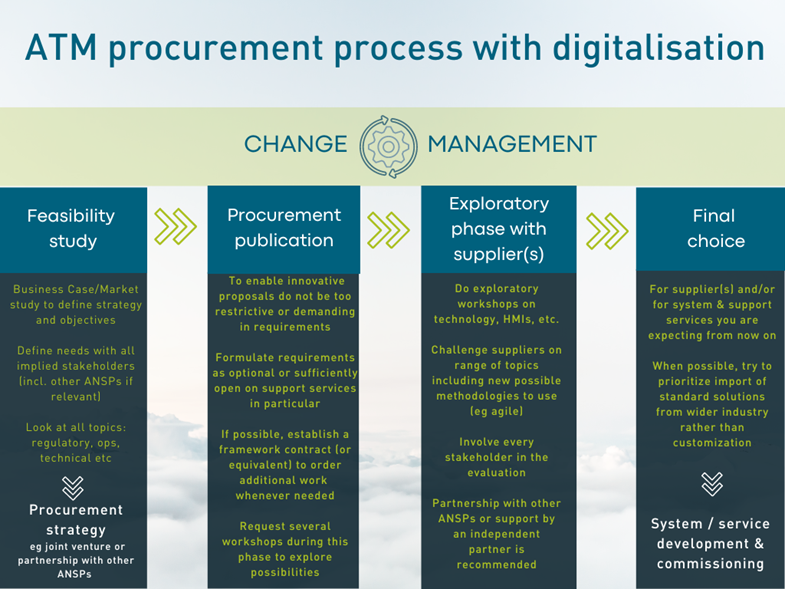Egis has worked closely with many air navigation service providers (ANSP), worldwide, to support the procurement of new air traffic management (ATM) systems. As in the rest of our societies, these new systems are more and more oriented towards digitalisation and new technologies, such as virtualisation, provision/use of data services, artificial intelligence, or Remote Tower. In this blog, Carole Dupré explains why digitalisation could be seen as a challenge in ATM and provides some practical advice on how to organise your procurement practice to support digitalisation.
ATM towards digitalisation.
The digital transformation taking place today is revolutionising customer expectations across society. Customers want more and more immediacy, simplicity, and quality of service in a volatile and changing world. The emerging trend is increasingly towards the use of services rather than ownership. However, the outline of this transformation is rather blurred: there are new technologies, but their use remains to be defined (e.g. artificial intelligence automation). And there are also “dreamed evolutions” that do not exist yet (concepts in place, but with no sufficiently advanced prototype for instance – eg. ATM Data Service Providers or cross-border dynamic sectorisation).
On the other hand, the ATM world is well-known for its ‘slow’ evolution. Its systems have a very long life-cycle due to their complexity/specificity and to high expectations in terms of air traffic safety and security, and also due to limited competition in the system supplier market, which can also lead to limited innovation. If ATM operators today seek new forms of procurement, with more Commercial-Off-The-Shelf (COTS) solutions rather than bespoke systems, it typically takes them five to ten years from the point of system procurement until commissioning of the new system.
Digitalisation adds another layer of complexity. When ATM meets digitalisation, even if ATM wants to take advantage of the digitalisation opportunities, two main problems arise in procurement:
- Some of the turnkey solutions that aviation is looking for, such as Virtual Centre or SWIM, do not yet exist;
- And for other types of digitalisation (Remote Tower for instance), the ATM world may lack experience, at least on application in specific contexts.
When you can’t see an advanced prototype for a product, or when technologies are very innovative, in a complex and highly secured domain as ATM, the buying act is very complex for ANSPs, as can be the planning of a purchase and the writing of a procurement specification. This leads some ANSPs to get involved at the research phases of digital concepts (i.e., SESAR) as part of their long-term goal to procure a digital solution.
So, how could you set up an efficient and successful procurement process for a new system to be commissioned in 5 to 10 years, for which:
- you don’t know precisely the scope, use, and/or technology currently
- but you know for sure that those will change within the same time interval?

